Toyota Prius Vs Toyota Crown Comparison

It’s another case of sibling rivalry here at AutoGuide.
Toyota offers not one but two all-hybrid car models. One is—of course—the Prius. Wholly redone for the 2023 model year, it’s went from gawky to gaw-dang gorgeous. The hybrid poster child is finally, finally cool, and it packs far more power than before as well as the traditional exceptional fuel economy.
But there’s another choice for those wanting a little more. The Toyota Crown debuted a few months before this Prius, sitting atop the Toyota car lineup. It replaces the Avalon, in a shape that’s just as unique as that of the Prius, but in a different way. A raised sedan might just be the purest definition of the word “crossover.”
With both models here in Limited trim, we put them together to learn where each car’s strengths and weaknesses reside.
Interior and Cargo Space
Toyota Prius: Just in case you thought the exterior of the Prius was its only funky attribute—look at that steering wheel setup. The Prius’ deep-set instrument panel sets the tone, negating the need for either a head-up display or a large-diameter steering wheel. Want to set that tiller nice and low, practically in your lap? Done. This provides the Prius with a certain feel of airiness, alongside the slimline dashboard and minimal center console.
Material quality is par for the compact car course: not Civic or Mazda3 good, but solid and consistent nonetheless. There’s a lot of dashboard here, so the soft-touch material is welcome. The columns of controls on the wheel can be intimidating at first, but you quickly appreciate the at-your-fingertips approach. Yay, physical controls.
Of course, this stylish makeover has impacted cabin space. The front isn’t too bad: the Prius has a smidge less headroom than the Crown (38.0 inches / 965 millimeters against 38.2 in / 970 mm) but somehow more legroom. The moonroof’s leading edge is better positioned for taller-torsoed like yours truly, as well. It’s the back that isn’t great: 36.4 inches (925 mm) of pinched headroom is tough, and there’s just 34.8 inches (884 mm) of legroom.
Cargo capacity has also seen a cut, though at 20.3 cubic feet (575 liters) with the seats up, the Prius still has big bro beat.
Toyota Crown: The Crown’s two-tone cabin is more conservative than the funky Prius’. More refined. The door panels and substantial center console are squishier. The latter’s chunky nature does make the Crown feel a bit tighter than the open-air Prius, alongside the tiny front portion of the moonroof. The truth is there’s actually more hip- and shoulder room in here.
One thing we like in both vehicles: the two-plane physical controls below the touchscreen. This not only makes it possible to fit a lot of controls in a fairly small space, but it’s great for muscle memory. Less enjoyable is Toyota’s weird knock-it-sideways shifter. We prefer the Prius’ round cupholders, too.
Rear passenger space is where the Crown picks up a sizeable lead. An inch of additional headroom (37.5 in / 953 mm) is welcome; 38.9 inches (988 mm) of legroom is even better.
Cargo capacity is a solid 15.2 cubic feet; near the front of the sedan pack, but still just three-quarters of what the Prius offers.
Bottom Line: The Crown offers more space—of course—and a more traditional cabin layout. Headroom is tight in both cars, but the Crown’s biggest advantage is the four additional inches of legroom in back, making it more adult-friendly. The trade-off of that sedan shape is less cargo room, and a less adaptable space to handle said cargo. The Prius is better for the driver and front passenger, and has a more youthful feel with that funky instrument cluster layout. We prefer that.
Toyota Prius vs Toyota Crown: Tech and Features
Prius: Both of these vehicles have the same 12.3-inch infotainment screen, running the latest Toyota Multimedia infotainment platform with three-year trials of Remote and Drive Connect. It’s a simple system to use, and the larger screen minimizes one of our biggest criticisms: a crammed screen when dealing with radio stations. Wireless Apple CarPlay and Android Auto are both included, along with numerous USB ports—in fact, the Prius out-points the larger Crown on the latter, with six plugs versus five. An eight-speaker JBL audio system is mid, neither good nor bad.
The wireless charger is a clever little mail slot beside the shifter. I found it was more sensitive to case thickness, however.
Toyota Safety Sense 3.0 is one of the more robust safety suites in the mainstream market, and standard on every Prius. Pre-collision assist, automated emergency braking, as well as blind-spot monitoring with rear cross-traffic alert are all present and work as expected. Toyota’s full-range adaptive cruise control has also evolved over the years, with good lane discipline and natural responses.
Crown: As mentioned above, the Crown’s touchscreen is the same unit as the one in the Prius, with all the same functionality. One advantage: the wireless charger, which snugs a phone in right-way-up for easy charging. Befitting its position in the market, the Crown has a more powerful, 11-speaker JBL audio system.
Similarly, the Crown also comes with Toyota Safety Sense 3.0. It includes an identical litany of acronyms, including the divisive Proactive Driving Assist. This (defeatable) assist will gently apply the brakes if it senses the Crown is approaching a corner too quickly or is too close to a lead car. In theory fine, but in practice it’s too cautious and too much micromanaging.
Bottom Line: These two are very evenly matched on the tech side. Same infotainment, same screens, nearly the same audio system—you get the picture.
Powertrain, Driving Feel, and Efficiency
Prius: For this model year, the Prius has gained a larger, 2.0-liter four-cylinder as well as a more powerful electric motor. Or a pair of them, as is the case in this all-wheel drive model. The result is 196 combined horsepower, in a vehicle that weighs around 3,300 pounds (1,500 kilograms). Around town, the Prius is plenty quick, and while the engine can get thrashy higher up in the rev range, the added electric power means you can keep it to a minimum with a modicum of right-pedal restraint.
The TNGA platform provides the Prius with a solid foundation, both comfortable and—whisper it—a bit of fun when asked. The relatively light curb weight and quick, accurate steering makes the smaller of these Toyotas easy to place on the road. The brake pedal is consistent and progressive. Ride quality is very good, even on the large wheels.
Fuel economy is a traditional Prius strength, and this fifth-gen model keeps the streak going. This one is quoted at 49 mpg combined (4.8 L/100 km), and our week of testing showed that to be accurate.
An important note: AWD is optional in the US, but standard in Canada.
Crown: The Crown’s powertrain is a very familiar one: the Toyota 2.5-liter four cylinder setup. With its combination of combustion and electric propulsion, this setup has 236 horsepower. Every Crown is all-wheel drive as well.
Like the Prius, the Crown is all smooth sailing around town. Here, its notoriously grumbly gas engine only makes special guest appearances. Venture out on the highway and the drone is real, as the Crown has to lug around almost 700 pounds (317 kg) more than the Prius. It’s this powertrain’s weakness, and one that doesn’t align with the Crown’s premium aspirations.
This is still a very fuel efficient vehicle for its size, however. Officially the Crown will do 41 mpg (5.7 L/100 km). Like the Prius, it had no trouble hitting similar figures over the course of the week.
Bottom Line: The Crown has more power, but its chunky 3,979-pound (1,805-kilogram) curb weight more than negates that advantage. The Prius is more comfortable, more engaging, and more fuel efficient.
Toyota Prius vs Toyota Crown: Styling
Prius: We’ve sung its praises a lot over the last year, but just to reiterate: we think the new Prius is hot. It’s got the sort of windshield rake normally reserved for a Lamborghini. The tail has a unique approach the industry-wide, full-width taillight trend. And in Canada, we get this yellow paint. Win!
Crown: Toyota’s big sedan needs to be seen in person. The odd high-rider premise works better surrounded by the city and other cars, where it’s different enough to stand out, but not as odd as auto shows suggested. Don’t let the cladding fool you: with 5.5 inches (140 mm) of ground clearance, this thing is actually closer to the ground than the Prius.
Bottom Line: Both vehicles break the molds, and that’s great from traditionally conservative Toyota. But only one of them got consistent comments from passersby during the week. We can only chalk so much of that up to the bright yellow paint, too—the Prius is cool.
Pricing and Value
Prius: The Prius naturally has a big price advantage here: it starts for just $28,745 including destination in the US (Prius LE), whereas the Crown’s point of entry is almost 50-percent more money.
The story is a bit different in Canada, where the Prius comes with AWD standard, and starts with the XLE trim. That results in a starting price of $38,510 CAD.
Our top-of-the-line Limited AWD is the same on either side of the border—America’s Limited Premium Package is standard on the Canadian model. The only difference: our sweet yellow paint. The as-tested price is therefore $38,595 ($44,850 CAD).
Crown: A Crown XLE will run buyers $41,045 in America, including destination. Canada’s 2023 pricing puts the same model at $47,450 CAD; for 2024, the Crown lineup will begin with this Limited in Canada.
As-tested, the Crown rings in at $47,070 ($53,105 CAD).
Bottom Line: The Crown doesn’t feel nine grand richer than the Prius experience.
Toyota Prius vs Toyota Crown Comparison: Verdict
We appreciate Toyota shaking things up with the Crown. Out in the wild, its looks work better, and the cabin is a quality place to spend time.
The Prius is the more impressive car, however. Unless you really need the extra rear legroom, it looks better, drives better, and is nicer on your wallet.
Become an AutoGuide insider. Get the latest from the automotive world first by subscribing to our newsletter here.

Kyle began his automotive obsession before he even started school, courtesy of a remote control Porsche and various LEGO sets. He later studied advertising and graphic design at Humber College, which led him to writing about cars (both real and digital). He is now a proud member of the Automobile Journalists Association of Canada (AJAC), where he was the Journalist of the Year runner-up for 2021.
More by Kyle Patrick
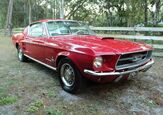


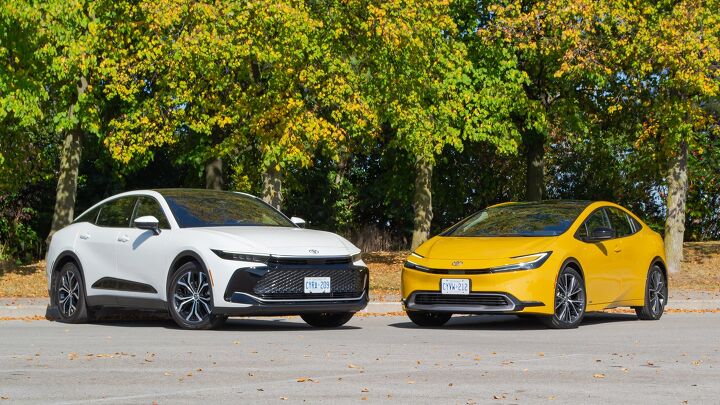
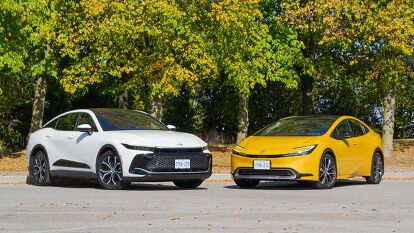










































































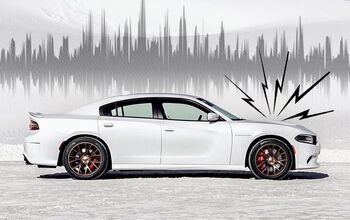
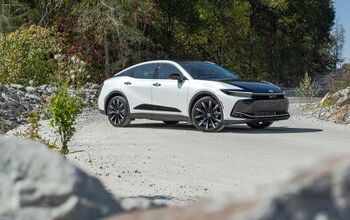
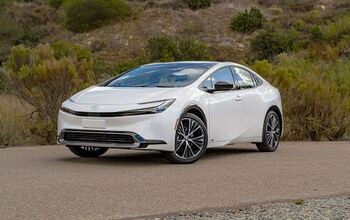
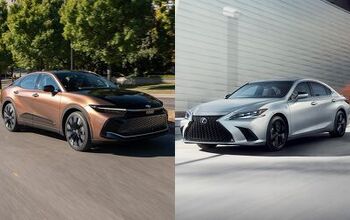

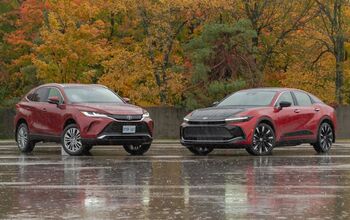











Comments
Join the conversation